With the authority vested in me by POWR, I challenge you to read this content marketing guide for social media till the end.
(Here, I’m using one of the psychological drivers that work on social media, too; you’ll find it explained in the article.)
What do you get from it? You will learn the best psychological tactics for content marketing to achieve better results on social media through 2024 and beyond.
In this article:
- 6 Types of Psychology-Driven Content on Social Media (And How to Use It)
Embark on this 5-minute training to leverage the psychology of social media and benefit from it.
Understanding Social Media Psychology for Content Marketing
Before optimizing your content strategy for social media, you must understand the average social media user. This user has a specific characteristic feature – a social media mindset.
Sounds vague, right? Let’s make it clearer.
Social media mindsets are pathways from opinions to psychological processes to behaviors in social networks:
Our interest lies particularly in the psychological drivers (triggers) that rule people’s cognitive and emotional processes.
They are as follows:
- Energy
- Motivation
- Joy of participation
- Social influence
- Impatience
- Fear of missing out (FOMO), urgency, scarcity
- Pre-holiday excitement
A person enters a social platform with a certain feeling or opinion (belief). They encounter content that triggers an emotional response (psychological process), leading to their action or inaction (behavior).
Let’s take an example.
Several users open Twitter with particular mindsets. They see this tweet by Warehouse Anywhere aimed at B2B lead generation.
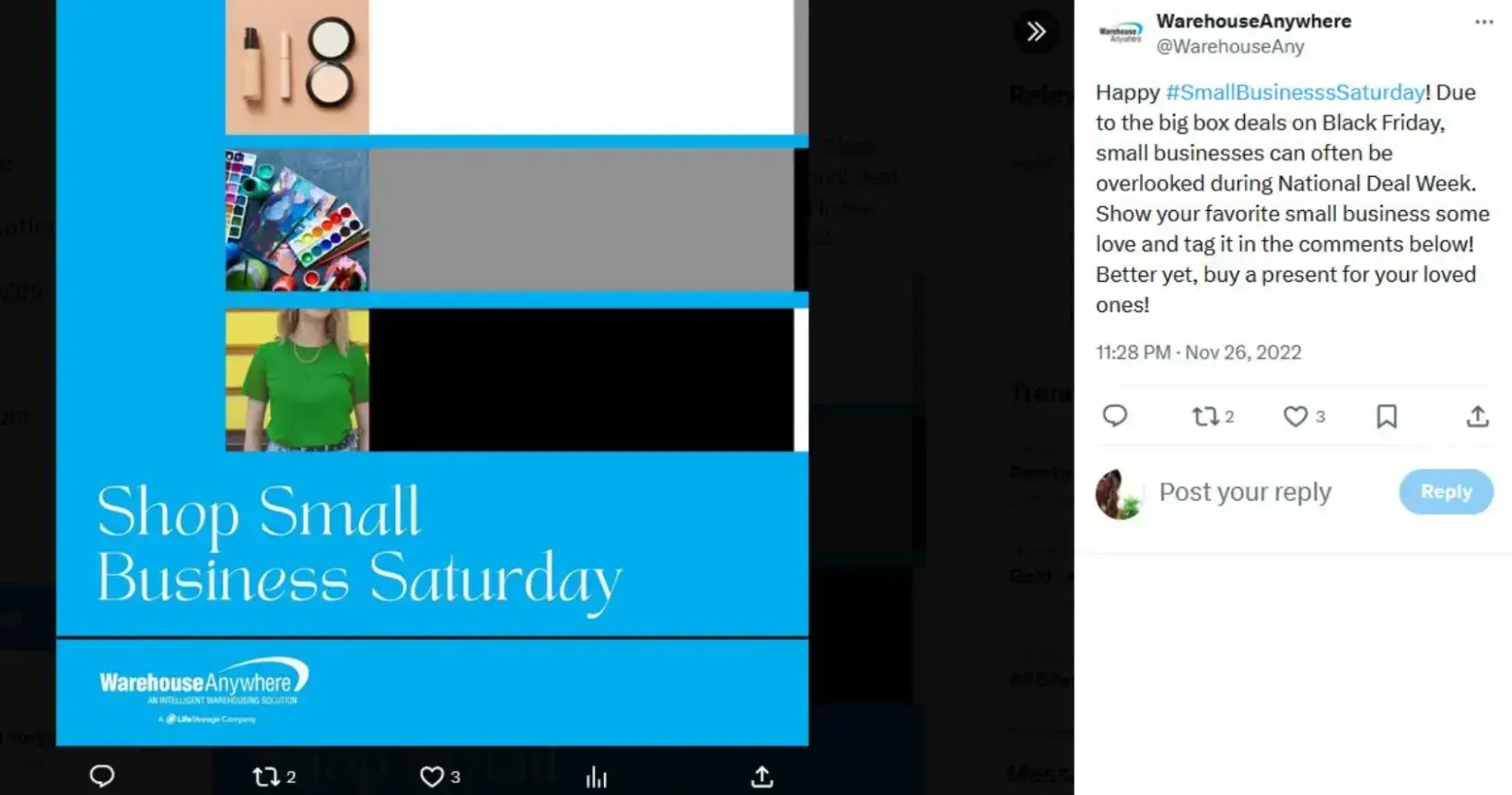
Source: https://twitter.com/WarehouseAny/status/1596616991015854080
Warehouse Anywhere reminds users to celebrate Small Business Saturday and asks them to tag a favorite SMB company.
The result?
Three users like the post, two retweet, but nobody tags businesses — inaction is also a behavior.
The holiday-driven excitement isn’t strong enough because Small Business Saturday isn’t a major holiday.
Still, the post generated engagement.
This demonstrates how shaping the user’s mindset and navigating customer psychology can improve social media content performance.
6 Types of Psychology-Driven Content on Social Media (And How to Use It)
From color choice to holiday campaigns – discover the top seven psychology-based content tactics to captivate your audience and drive sales.
1. Bright and contrasting colors (driver: energy)
One, two… You’ve missed your potential customers — the attention span on social media is only 1.7 seconds on mobile and 2.5 seconds on desktop.
Why?
Most likely because your visual lacked something bright or eye-catching. Dull colors get ignored, and your message is swallowed by the feed.
Vibrant color energizes the brain, boosts memorability, and correlates with higher likes. Research shows image brightness drives significantly more engagement.
Try these contrasting pairs:
- Blue + orange
- Yellow + purple
- Red + green
- Blue-violet + orange-yellow
- Blue-green + red-orange
- Violet-red + violet-green
Example:
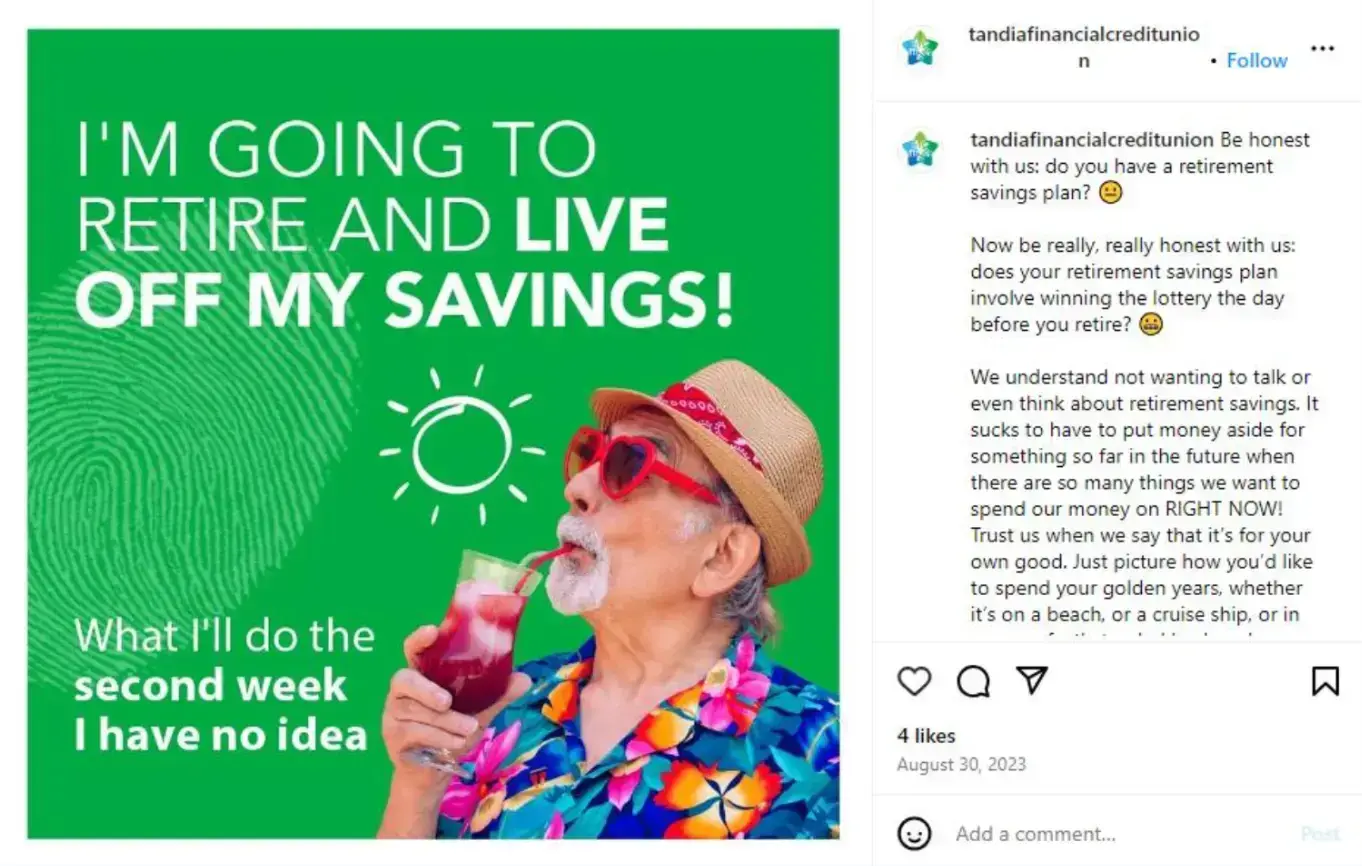
Source: Instagram
Bright green and red encourage users to try a retirement calculator — energizing them toward action.
2. CTAs in social media captions (driver: motivation)
Captions contextualize your content, but users only see the first line without expanding. Use it wisely.
A strong CTA:
- nudges users to act
- increases conversions
- aligns your content with clear intent
CTAs are “evergreen” content marketing hacks.
Examples:
- Drop [emoji] if you can relate!
- Tag a friend if…
- Share your …
- Don’t wait!
- Sign up now!
Example:
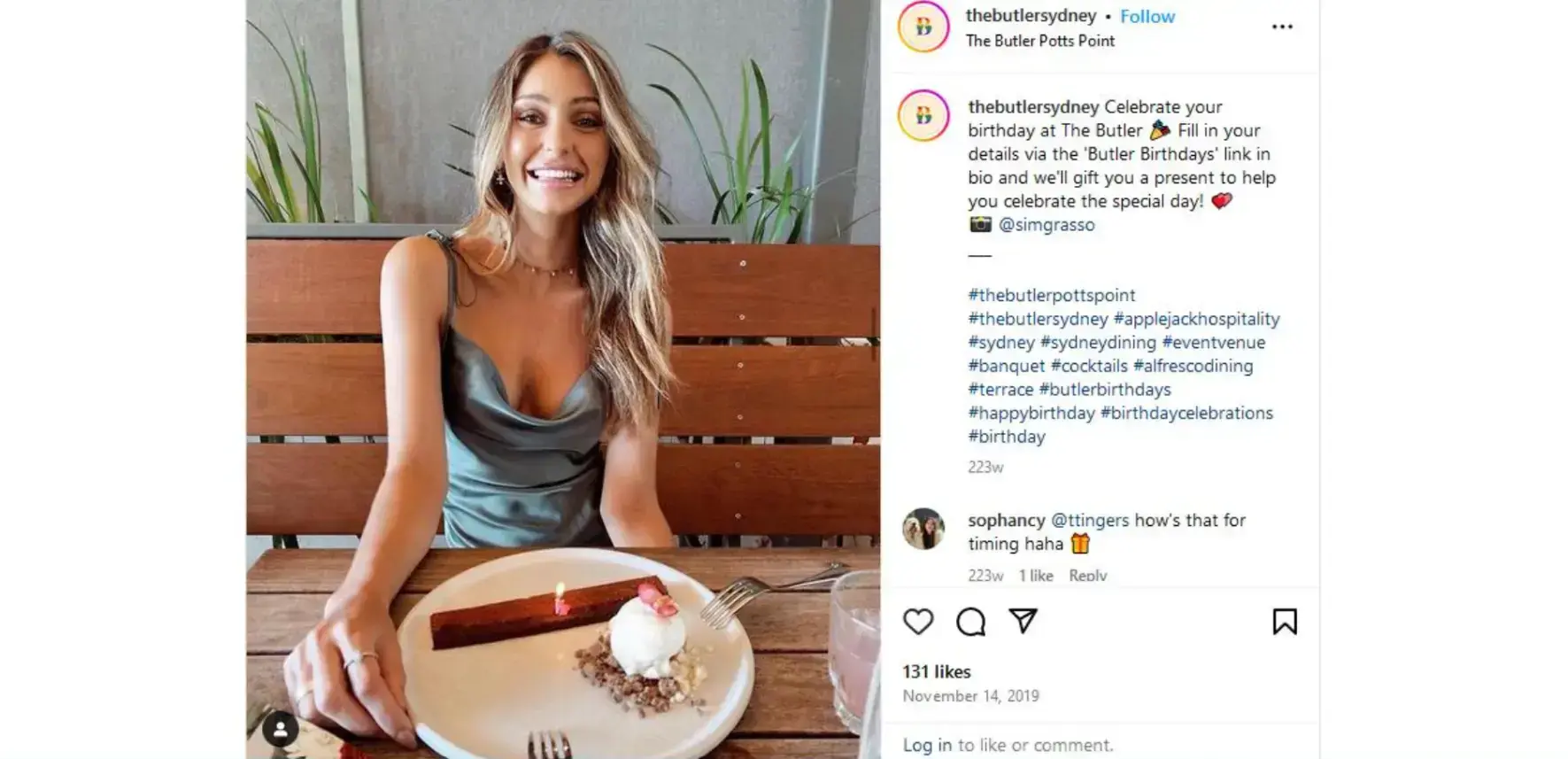
Source: Instagram
Pro tip: Use a social media caption generator to create compelling CTAs.
3. Engaging content (driver: joy through interactivity)
Interactive content — polls, puzzles, challenges, contests — sparks joy and increases engagement. It fosters community and strengthens brand relationships.
Engagement is a core social media metric. Use social listening tools to learn what resonates most.
Polls
Example: Myntra’s LinkedIn poll with nearly 4,000 votes.
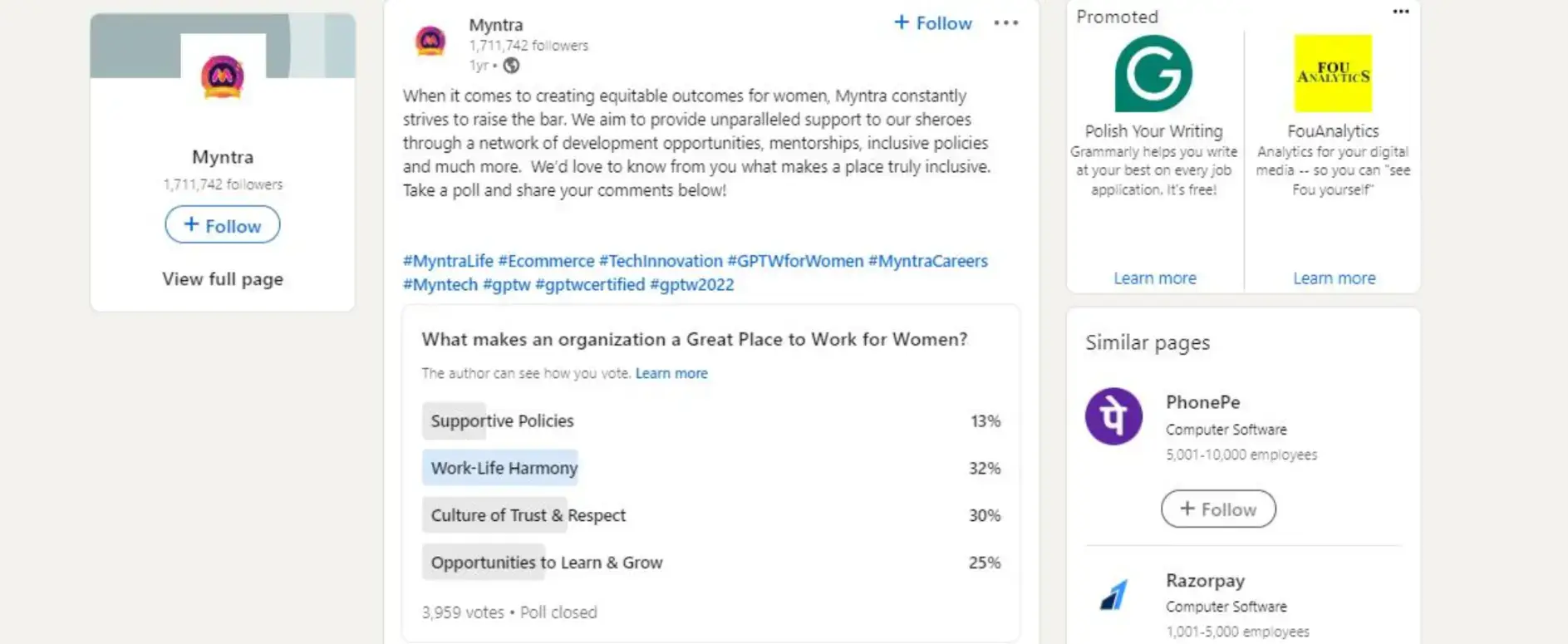
Source: LinkedIn
Threads example:
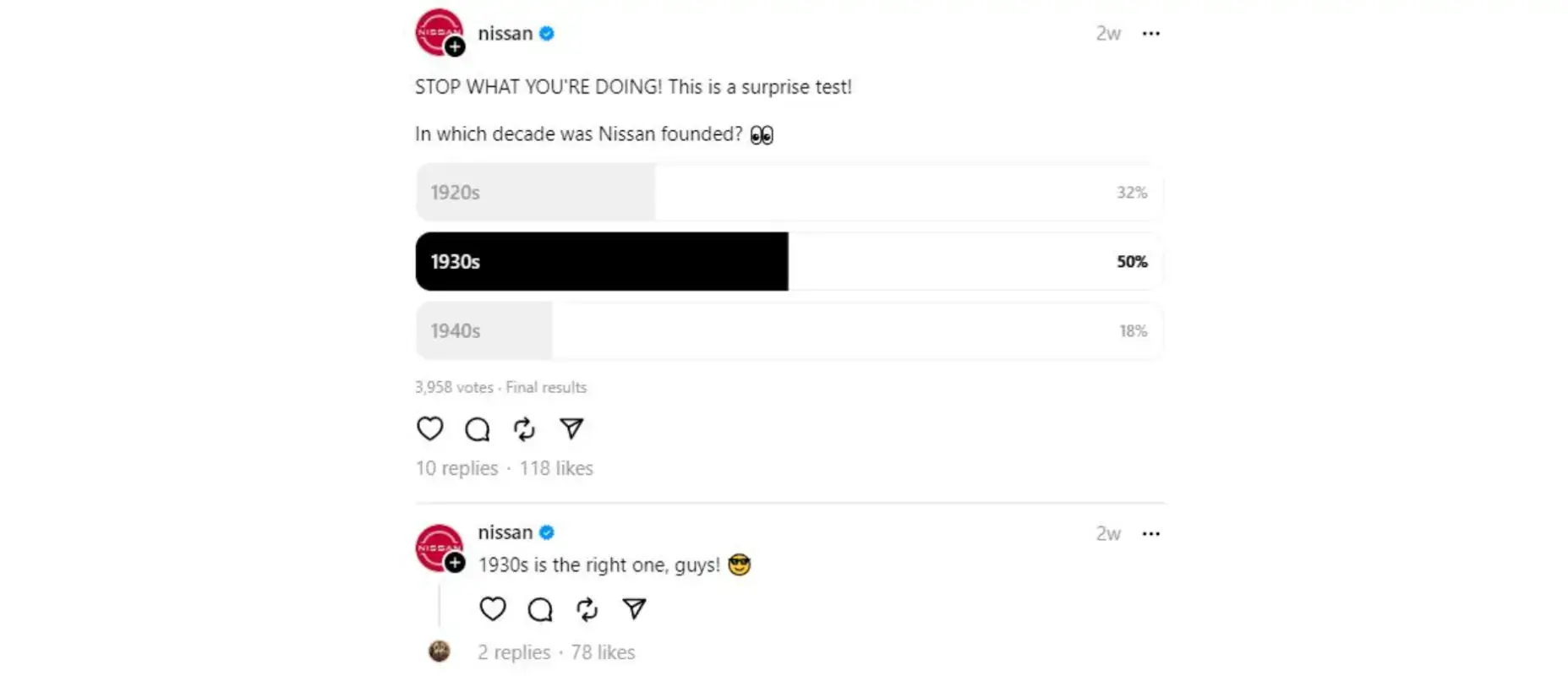
Source: Threads
Challenges
Challenges tap into our desire for novelty (neophilia).
Example:
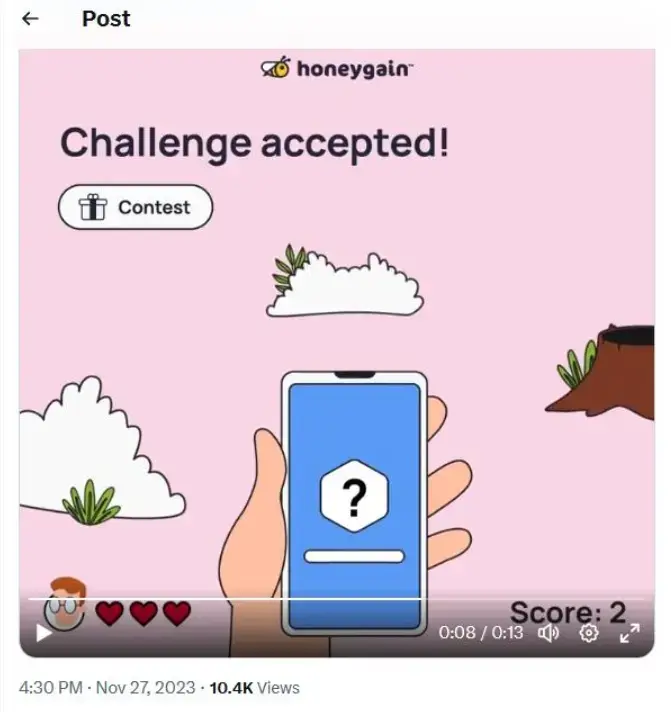
Source: Twitter
Puzzles
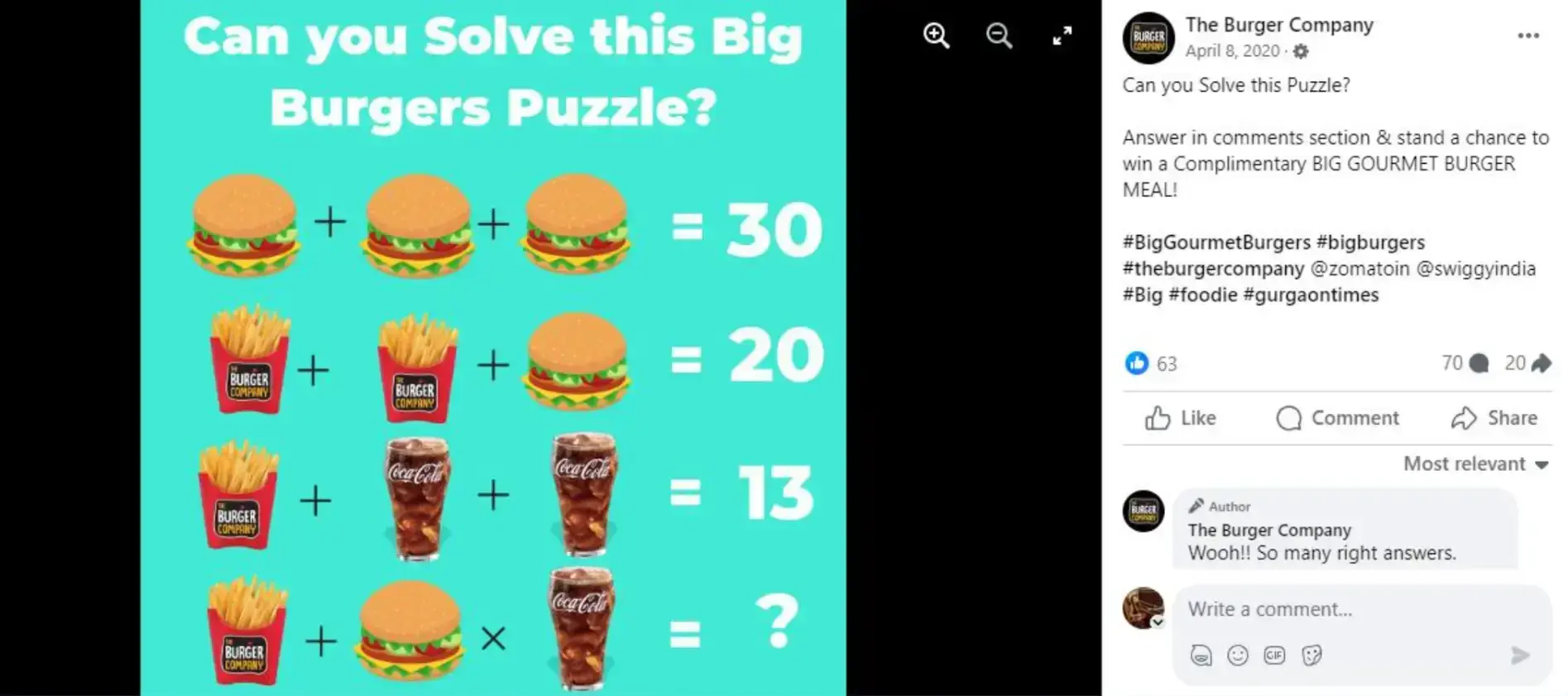
Source: Facebook
Contests
Contests generate:
- 3.5× more likes
- 64× more comments
- 70% faster follower growth
To measure performance, try an Instagram engagement calculator.
Example:
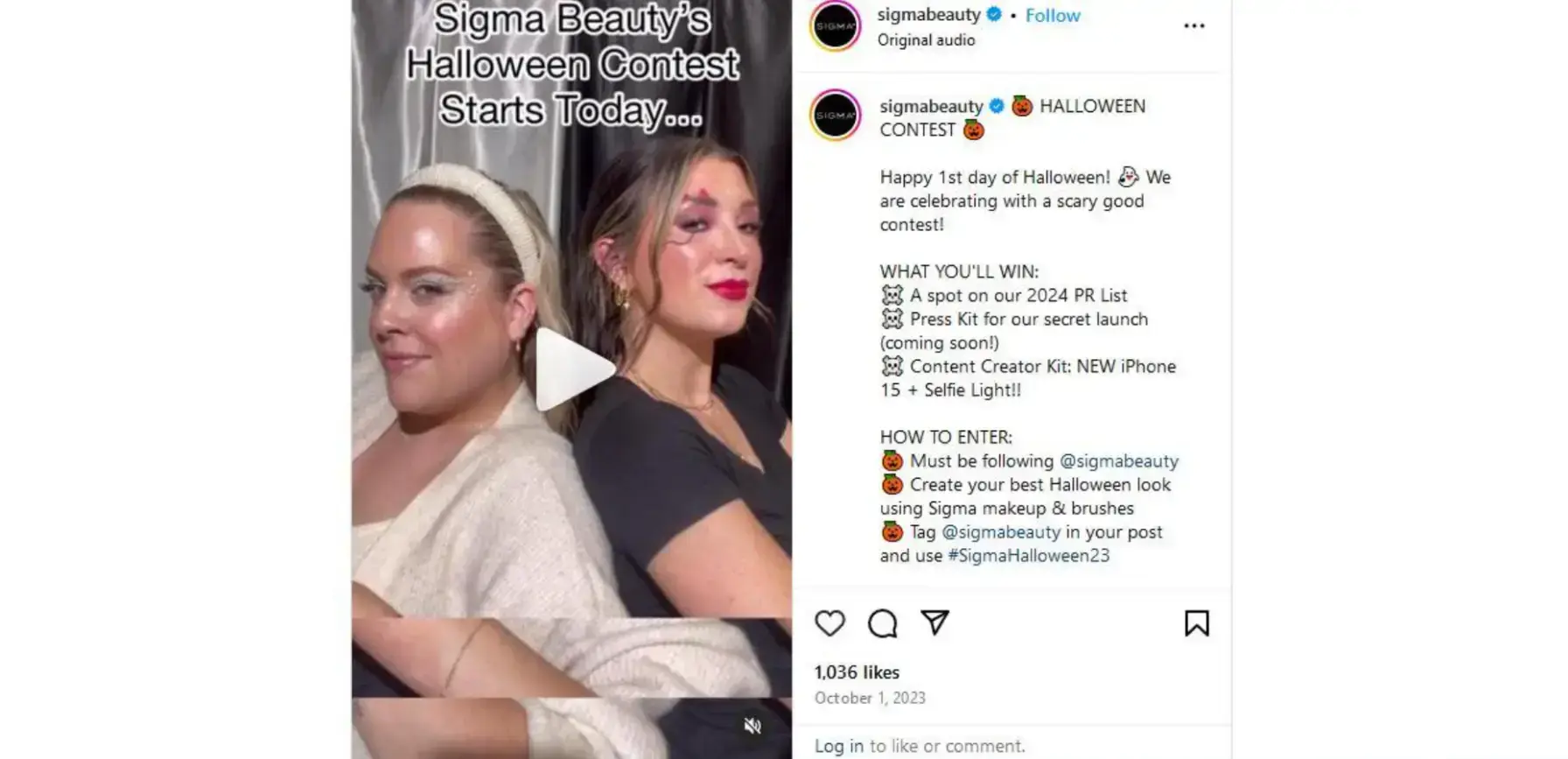
Source: https://www.instagram.com/p/Cx3D4J2tAXt/
4. Reviews and testimonials (driver: social influence)
Social influence — or social proof — drives user behavior. Nearly 46% of consumers trust online reviews as much as personal recommendations.
Use testimonials in social ads or posts to reinforce trust.
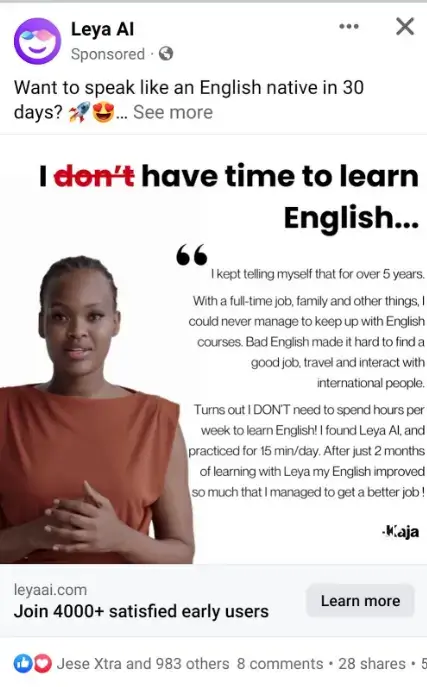
Source: Facebook
Influencers can amplify credibility. Micro-influencers (10K–100K followers) drive high purchase intent; nano-influencers (1K–10K) have even stronger engagement.
5. Short-form content (driver: impatience)
We live in an age of immediacy. People check their phones every 10–20 minutes. On social media, attention burns fast.
Short-form content thrives:
- Short videos
- GIFs
- Lists
- Micro-captions
- Infographics
Short videos have 2.5× higher engagement than longer ones.
People can only hold 3–5 items in short-term memory — so keep lists clean.
Examples from Simplish:

Source: Instagram
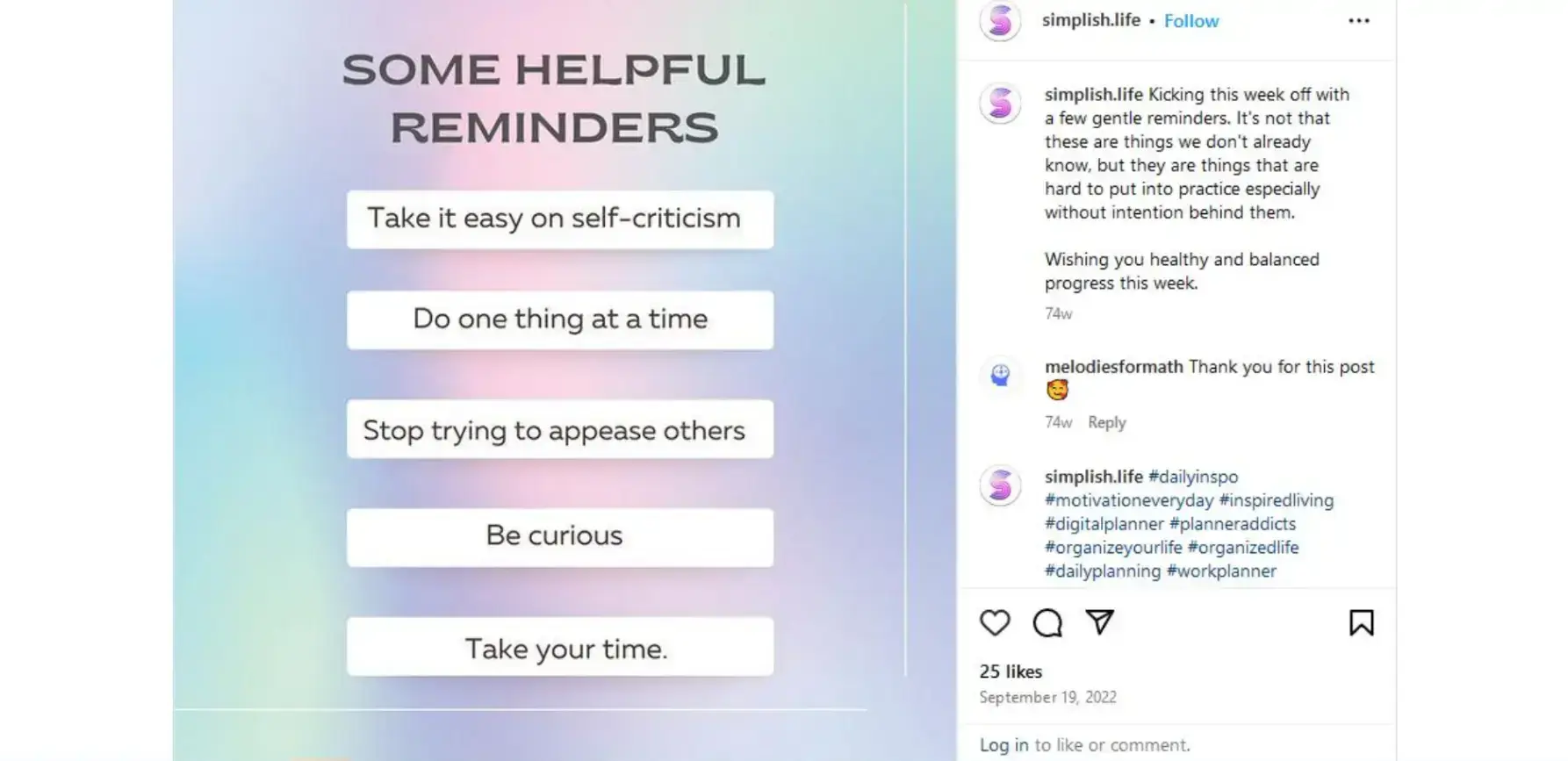
Source: Instagram
6. Limited-time offers (drivers: FOMO + urgency + scarcity)
Limited-time offers trigger urgency and FOMO, pushing users toward instant, emotion-driven purchases.
Common CTAs:
- Hurry! X off ends soon!
- Tick tock! Don’t miss this one!
- Get access before it’s gone
- Flash sale alert!
Example from Hulu:

Source: https://www.facebook.com/hulu
Final Thoughts
Understanding psychological drivers allows you to create content that feels intuitive, compelling, and timely.
By tapping into energy, motivation, social influence, urgency, and joy, you position your brand to stand out in a crowded feed.
Use these tactics thoughtfully, experiment with formats, and stay tuned to your audience’s emotional responses — this is where truly effective social media marketing begins.


